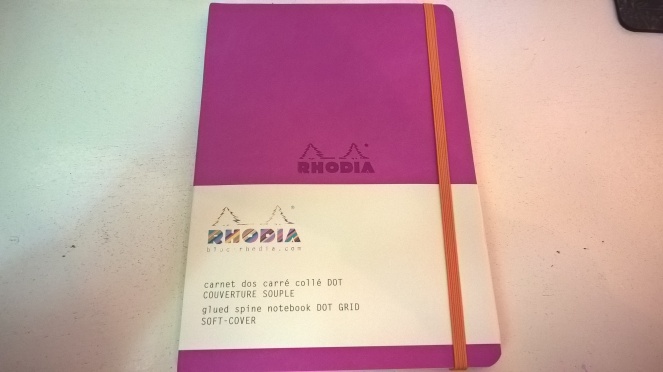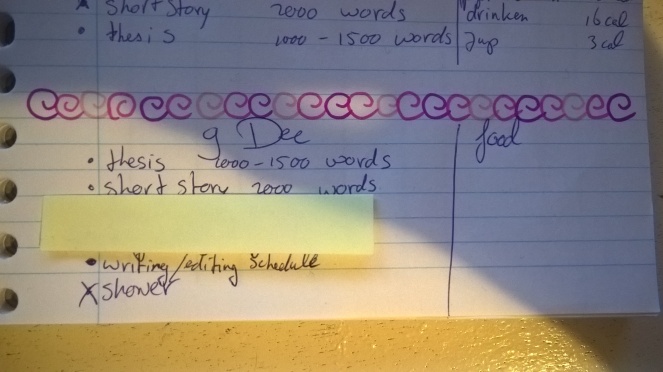I know that Bullet Journaling is one of the main subjects of this blog, which is why I thought it a good idea to actually make a guide on how to Bullet Journal in a back-to-basics way. Most of the pictures and posts I show on this blog are from me using this system for nearly a year now, but I thought it a good idea to also show my own beginnings. Let’s begin.
What is Bullet Journaling?
Bullet Journaling is a system devised by Ryder Carrol and has taken over the world in the last few years. The system is based on simplicity and making it work for you instead of making you work the system. You can find the most important information on the Bullet Journal website, but I’ll explain the basics below.
Some terms
Bullet Journal = the system
Bujo = shorthand for the Bullet Journal
Monthlies = pages you make every month
Weeklies = pages you make every week (as I’ve shown in the past here and here)
Dailies = pages for daily use
Collections = “other” types of pages, these often consist of either bigger planning pages (like Christmas presents or going on holiday) or collectable pages (books read, books to read, video game data, etc.)
What do you need?
You actually only need two things, pen and paper. It’s good if that paper is bound together in some way as that is what keeps the system working, instead of getting lost in loose pieces of paper floating everywhere.
This was, for example, my first Bujo notebook:

I was already using it for other notes and my writing, so instead of immediately buying an expensive notebook, I went with something I had on hand first. I worked in this for two to three weeks before I got a more expensive notebook.
These days I use Rhodia Rhodiarama notebooks in dot grid layout:

Pens, well, that depends on your wants, needs and your paper choice. Earlier this month I wrote about making pen test pages and how your choice of pen and paper are closely connected.
I personally think a third thing you may want to look at is a ruler or a triangle ruler. They really come in handy when you need to draw straight lines. I personally prefer a triangle ruler as it perfectly fits in the back pocket of my notebook.
So, here are the two important and one optional thing that you need:
- Notebook
- Pen
- (triangle) Ruler [optional]
How to Bujo!
The Bullet Journal system depends on two elements, the bullet points and the journaling, hence the name. The bullet points makes it easy to recognise and use the system on a day-to-day base and the journaling helps when you need to look back at something at a later point. All your things are in a single place, no matter if it’s your list for Christmas presents (let’s stay with the season, shall we?), your list of Christmas shopping, your plans to spread those shopping lists out over multiple days, or simply the fact that you still need to make sure you get all your work done during this busy month.
Here is, for example, an early entry for my bujo (in my original ruled spiral bound notebook):

Dec 9 2015 consisted of writing on my master thesis, some writing on my short story, an event that I blanked out for privacy reasons, making a schedule for my writing and editing and taking a shower. It also has some space for food logging as I was still on my diet back then.
In basis, this is how the system works for day-to-day work. You make a list of tasks with a bullet point in front of it and then you cross them off as you work through them. For things like events you can use a dash – in front of them to differentiate them from the tasks. There are more of these “keys” on the Bujo website. I mostly only use the bullets or the dash for my own things, but I know other people use different signifiers too.
But all these pages people share! What will I need?!
From a practical standpoint there are a few elements that you may want to add to your notebook:
- Index page, so you can find your pages later, this one goes totally at the front
- Future log, a couple of pages where you can plan and jot down things further into the future (like birthdays or when the county will collect the paper recycling), this one comes after the Index page usually
- Montly pages, these either all go at the front, or drop in where they end up inside the rest of the pages (this means mixing daily pages, collections and monthly pages inside the notebook, which is what I use).
- Daily pages, to do all the practical stuff.
On the topic of monthly pages, you have multiple choices of what to do with them. I prefer to put them into the notebook whereever they end up, as that means I get to keep all my pages from the same month in the same place. You can also put them at the front of the book, that way you have all the monthly views in one place but it means that you’ll have to switch between the front and the back of the notebook when you’re trying to find things or plan events.
Monthly pages often consist of at least one calendar-type page, either in traditional squared layout or in Ryder Carroll style of just a day per row on a page.

Other montly pages that people use are pages for challenges like the #PlanWithMeChallenge or trackers for habits and other things. But realistically, you need to only use what you need, that is the best part of the system. You make it what you need, not what some company thinks you need.
You can spend as much time on the notebook as you want. If you keep it really basic, you’ll probably spend only an hour or two every month to set up your planner, if you use a lot of different special pages and so all sorts of things with it, you may need two hours per day. But that’s all up to you.
Do you use the Bullet Journal system or do you use another system? And are your pages pre-printed or do you make them yourself? Comment below!
Love,
Rosa

I’m always slightly flabbergasted by those people who spend a lot of time putting stickers into their journal, etc. It does look pretty but the amount of time it takes is kind of staggering. (Or maybe they’re just extremely efficient!)
Thank you for this. I’ve been reading your posts but I didn’t quite understand that “bullet journaling” meant something specific.
LikeLiked by 1 person
Thank you for your comment! For lots of people, their planners are also a way to be creative, so it’s both useful and fun. I do do some more creative things with my planner, and I’ll probably share them on the blog later, but my planner is not my main way to be creative. It’s mostly a way to be productive and to slow down and think about what I do and what I need to do next.
LikeLike
nice article. Thanks.
LikeLiked by 1 person